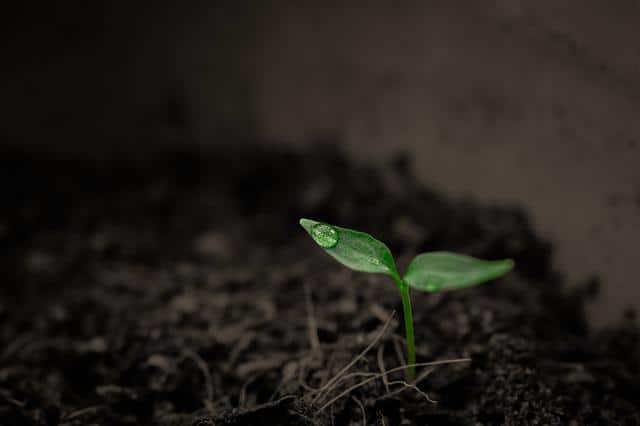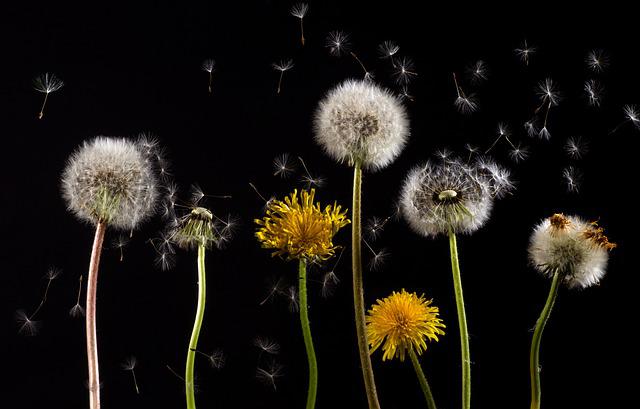As the season begins, gardeners and lawn-keepers rush to head start gardening. If you’re one of them, then you’re at the right place for seeking guidance.
Starting seeds by yourself is an exciting and therapeutic part of the gardening experience. Nonetheless, waiting for seeds to emerge from the soil can be frustrating, considering how eager you can be to see your veggies grow big enough to provide you with food. So, how long does it take for vegetable seeds to sprout?
To start your seeds early and plan your planting strategy, considering how long vegetable seeds need to sprout can take your garden to the next level. The result will often be that you can harvest more throughout the season and that your product can be harvested earlier.
Planning your seedling strategy in advance can help you get the most out of your vegetable garden, allowing you to enjoy a longer harvest season with fresher produce.
Vegetable seeds take time to sprout based on various variables, but it is still a variable amount of time. Read this article for more information on how long does it take for vegetable seeds to sprout. Many charts are available online that provide information regarding specific vegetables.
How Long Does It Take For Vegetable Seeds To Sprout?

From the time you place the vegetable seeds in the soil until you see the green sprout appear, it usually takes one to two weeks for them to germinate.
The first step after planting seeds is to trigger the germination process. These timeframes can vary from three to eight days depending on the type of plant you plant, with radish seeds germinating and sprouting in three to eight days on average, compared to parsnips, which take sixteen to twenty-five days on average.
Seeds will sprout only if you have met their sprouting and growing requirements.
Fortunately, many seeds have similar needs and can be managed similarly. Once they have broken the surface, they will need to be at a specific temperature, absorb water and receive sufficient light. In discussing how to speed up natural germination, you will also discuss how influential their outing coating might be.
Germination Temperature
When considering conditions that affect the rapidity with which seeds sprout, heating is probably one of the most critical factors. The temperature of the surrounding environment and the soil in which the seeds are significantly sown impact germination.
If the seeds of a mature plant have matured by the end of the previous year’s season, they may fall off or remain on the seed head until spring. The weather warms up in the spring.
Because the temperature of the seeds acts as a natural trigger, placing the seed pan on a heated pad should result in the seeds germinating. As a result, some seeds may have to go through a specific cold dormancy period before germinating.
The Germination Of Seeds Is Affected By Moisture

“This refers to one of the other main factors in getting seeds to germinate and sprout, the amount of water they can absorb. The ground may be too cold for the seeds to absorb the water they require to thrive during the winter. As the ground thaws, seeds regain their ability to grow just in time for the spring rains.
It is best to keep your seed trays moist and give the seeds plenty of water when trying to mimic natural conditions. The seeds’ casing will pop open once they expand enough and are subject to enough internal pressure from the growing seedling and the water.
Germination Of Seeds Under Different Lighting Conditions
As the seedlings push toward the surface of the soil, this is something to consider. If the seeds do not have access to light, they will be unable to begin photosynthesizing and die fast if the natural food stored within the seed’s casing runs out.
It is an excellent idea to employ an artificial lighting system if the seeds are not planted outdoors, receiving the light they need.
These systems are available in many sizes and will be very useful if having trays of dirt lying around your house is not your thing.
Methods to Speed Up Seed Germination
While the natural germination process is influenced by various factors, there are techniques you can employ to expedite seed sprouting. These methods can help you achieve faster and more uniform germination, saving time and ensuring successful plant growth.
Scarification: Some seeds have hard outer coats that can delay germination. Scarification involves nicking or scratching the seed coat to facilitate water absorption and encourage quicker sprouting. This technique is particularly useful for large seeds and can be done using a sharp knife or sandpaper.
Pre-soaking: Pre-soaking seeds in water before planting can accelerate germination. By allowing seeds to absorb water overnight, you ensure they have sufficient moisture to initiate sprouting promptly. This method is especially effective for seeds that have hard coatings and require more water to soften and break through.
Artificial Lighting: Providing adequate light is crucial for seedlings. If you’re starting seeds indoors or in low-light environments, using artificial lighting systems can ensure that your seeds receive the necessary light for healthy germination and growth.
By understanding and utilizing these methods, you can optimize the germination process, shorten the time it takes for seeds to sprout, and promote successful plant development.
See How Seeds Are Germinated

Lastly, this article will discuss how to make seedlings’ jobs more accessible so that you can speed up the process. It is rare to do this through scarification, which is very similar to its name.
Gardeners can nick the seed with a sharp knife to make it simpler to open itself rather than depending on the slow building of pressure to shatter the seed’s outer coat and allow the seedlings to emerge. You can use this method to sacrifice enormous seeds.
It may be necessary to scarify some seeds to germinate, but most seeds will not need it. It is also possible to speed up the sprouting process by soaking the seeds overnight in water to make sure they absorb the water they need before they are planted in the soil.
The surrounding soil will not absorb the water before it can, so it will be absorbed quickly.
Recommended Temperature and Storage Conditions for Seeds
To maintain seed viability and ensure optimal germination rates, proper storage conditions are essential. Understanding the ideal temperature and storage guidelines can help preserve seed quality and maximize their potential for successful sprouting.
Temperature: Seeds should be stored in a cool, dark environment. The recommended temperature range for seed storage is typically between 41 and 50 degrees Fahrenheit (5 to 10 degrees Celsius). Avoid exposing seeds to extreme temperatures, as this can affect their viability.
Moisture: Seeds should be stored in an environment that is neither too dry nor too wet. Excessive moisture can lead to mold or rot, while excessive dryness can cause seeds to lose their viability. Finding the right balance is crucial for maintaining seed quality.
By following these storage guidelines, you can ensure that your seeds remain viable and ready for successful sprouting when the planting season arrives.
Also read: What’s The Difference Between Potting Soil And Garden Soil?
Summary
Now you know how long it takes for vegetable seeds to sprout. The best place to store seeds is cool, dark, not too dry or wet. The ideal temperature is between 41 and 50 degrees Fahrenheit or 5 to 10 degrees centigrade.
Your garden should be ahead of the game and ready to deliver a plentiful yield in no time now that you know the timing and essential components for sprouting.
Understanding the factors influencing seed germination time, employing methods to speed up the process, and providing proper storage conditions for seeds are essential for successful gardening and maximizing your harvest. By considering these aspects, you can enhance your gardening experience and enjoy the rewards of homegrown vegetables.
Frequently Asked Questions
When It Comes To Growing Veggies From Seed, How Long Does It Take?
Vegetables such as beans, lettuce, and beets can be grown in as little as 70 days, whereas peppers, potatoes, and carrots might require up to 120 days.
How Long Does It Take For Seeds To Grow On A Paper Towel?
Depending on the quality of the environment, seeds can take a long time to sprout on a paper towel. If the conditions are good, you can anticipate your seeds germinating for up to 7 days. However, if you fail to provide them with good conditions, it can take a little longer to grow.
Do Germinating Seeds Need Light?
Sunlight is essential for seedlings. Lack of light will cause seeds to become leggy and fragile, and they will not grow as well as they could. Table 1. Temperature conditions for germination of vegetable crops.

Hey, I’m Lisa and I’ve been an avid gardener for over 30 years. I love writing, talking and living in the garden! Feel free to connect with me on my socials below

